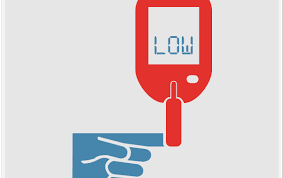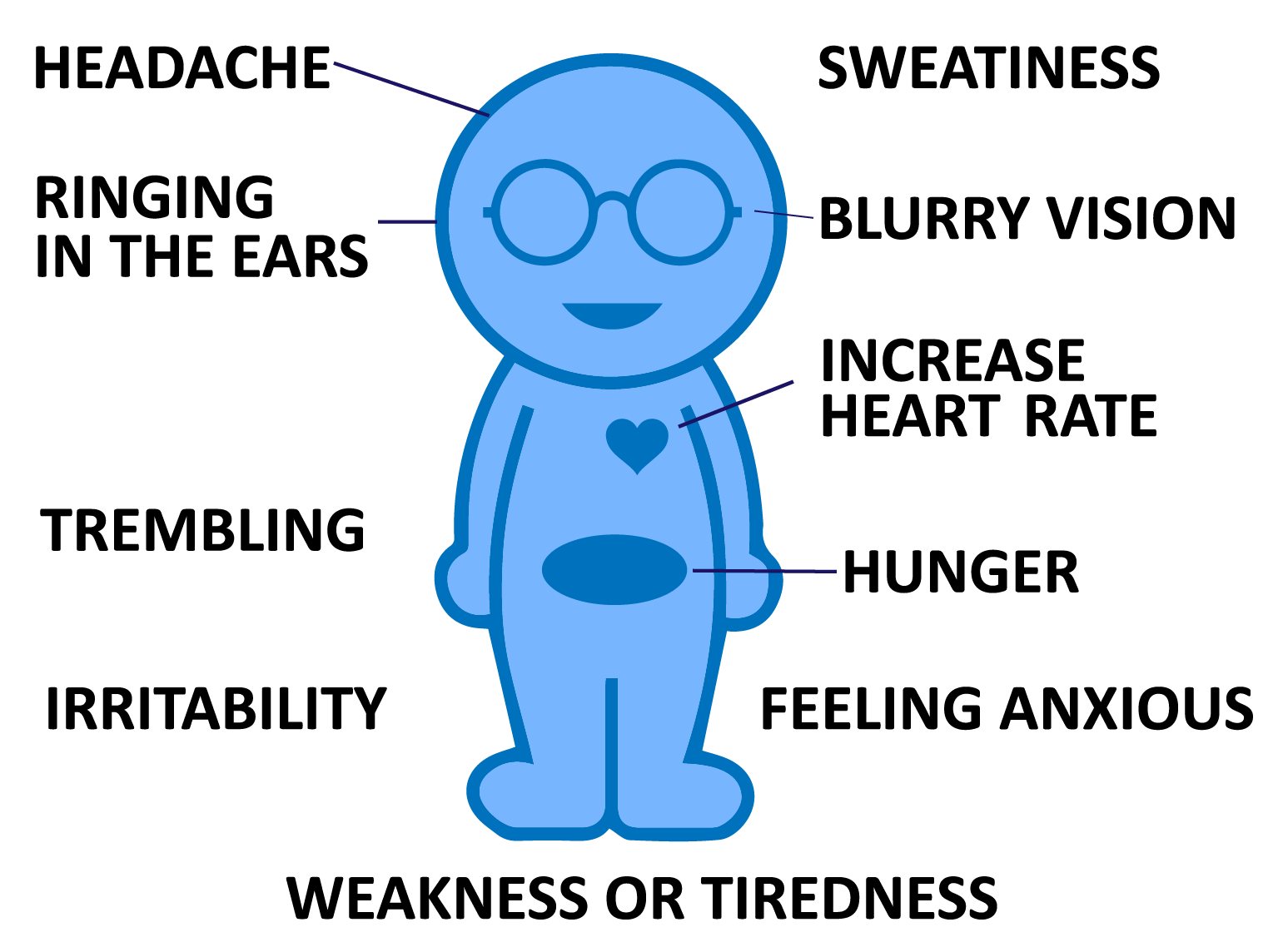Hypoglycemia

Knowledge is Power.
True/False - Quiz: Do You Understand Hypoglycemia?
Information - Hypoglycemia
 If you have diabetes, you may experience low blood sugar (hypoglycemia) if there's too much insulin and not enough sugar in your blood. You may develop hypoglycemia from taking too much diabetes medication or insulin, exercising more than usual or skipping a meal. You can determine if you have low blood sugar by using a blood glucose meter.
If you have diabetes, you may experience low blood sugar (hypoglycemia) if there's too much insulin and not enough sugar in your blood. You may develop hypoglycemia from taking too much diabetes medication or insulin, exercising more than usual or skipping a meal. You can determine if you have low blood sugar by using a blood glucose meter.
Symptoms of Hypoglycemia
Hypoglycemia is defined as blood sugar below 70 milligrams per deciliter (mg/dL), or 3.9 millimoles per liter (mmol/L). Early symptoms of diabetic hypoglycemia include:
• Dizziness
• Hunger
• Headache
• Sweating
• Anxiety
If left untreated, diabetic hypoglycemia can lead to seizures and loss of consciousness. Watch for more severe symptoms such as:
• Muscle weakness
• Jerky movements
• Blurry vision
• Slurred speech
• Confusion
Hypoglycemia Treatment
 Short-term hypoglycemia treatment involves drinking fruit juice or soda, eating hard candy or taking glucose tablets to raise your blood sugar to a normal range. To prevent diabetic hypoglycemia:
Short-term hypoglycemia treatment involves drinking fruit juice or soda, eating hard candy or taking glucose tablets to raise your blood sugar to a normal range. To prevent diabetic hypoglycemia:
• Don't skip meals
• Monitor your blood sugar
• Take your insulin and diabetes medication as prescribed
• Record your low glucose reactions to help identify patterns that may contribute to hypoglycemia
Blood glucose monitoring is an important part of any diabetes management plan. If you have diabetes, it’s important to check your blood sugar levels as prescribed by your doctor. This will determine if you have low or high blood sugar and show you how your medication and lifestyle are affecting your blood sugar levels. The goal of blood glucose monitoring in diabetes is to keep your blood sugar as close to target range as possible. You’ll need to get a blood glucose meter from your pharmacist or diabetes educator and learn how to use it.
A traditional blood glucose meter uses lancets to puncture your skin, drawing a drop of blood that you then test on a blood glucose strip. A flash glucose meter (FGM) is a newer device that doesn’t require you to prick your finger – it uses sensor scans. Some people use a sensor inserted under the skin, called a continuous glucose monitor (CGM), to check blood sugar levels. As diabetic hypoglycemia is an emergency, use a medical ID necklace so that emergency responders will know that you have diabetes.
Talk to your endocrinologist if you'd like more information on hypoglycemia.
Visit HealthChoicesFirst.com for more videos and resources on diabetes.
Print this Action Plan and check off items that you want to discuss with your healthcare provider
-
You may develop hypoglycemia from taking too much diabetes medication or insulin, exercising more than usual or skipping a meal. You can determine if you have low blood sugar by using a blood glucose meter.
-
Early symptoms of diabetic hypoglycemia include: dizziness, hunger, headache, sweating and anxiety.
-
If left untreated, diabetic hypoglycemia can lead to seizures and loss of consciousness. Watch for more severe symptoms such as muscle weakness, jerky movements, blurry vision, slurred speech and confusion.
-
Short-term hypoglycemia treatment involves drinking fruit juice or soda, eating hard candy or taking glucose tablets to raise your blood sugar to a normal range.
-
To prevent diabetic hypoglycemia don't skip meals, monitor your blood sugar, take your insulin and diabetes medication as prescribed and record your low glucose reactions to help identify patterns.



